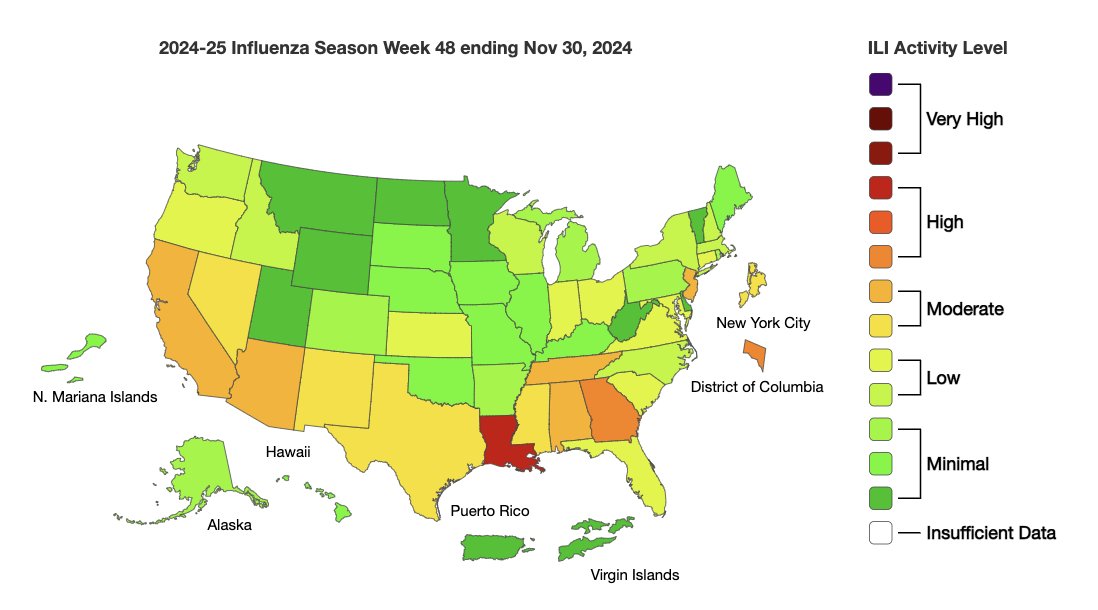1. A short #flu 🧵
@CDCgov posted flu data for the week ending Dec. 25 today. Flu activity continues to increase, but remains at lower levels than in pre-pandemic years.
Most diagnosed flu infections are in 5-24 year olds. Flu activity is highest in the east & central US.
@CDCgov posted flu data for the week ending Dec. 25 today. Flu activity continues to increase, but remains at lower levels than in pre-pandemic years.
Most diagnosed flu infections are in 5-24 year olds. Flu activity is highest in the east & central US.

2. Virtually all #flu activity so far has been caused by the #influenza A virus H3N2. That's too bad as it is the most problematic of (human) flu A & B viruses. There's a mismatch this year this year in the H3 component of flu shots. (Week 51, left column, season to date, right.) 

3. For the week ending Dec. 25 (week 51), 6.2% of tests run by clinical labs were positive for flu. I think the last time it would have been that high was the week ending March 21, 2020 (6.9%), when the very active 2019-20 flu season ran smack dab into Covid — and promptly ended. 

4. #Flu seasons start & peak at different points, so it can be hard to compare a week in 1 flu season to the corresponding week in another. So here's a chart to show how a positivity rate of 6.2% corresponds to other years at this time. 

5. In #flu seasons that start early, the positivity rate by week 51 can be above 20%. Last year's non-season doesn't even register here. The 2015-16 season was pretty atypical: mild flu season that only peaked in late March. 

6. A thing to note: While it's possible this #flu season will be less active than pre-pandemic seasons, any flu illness is right now is very unwelcome. Health systems are strained to the max with #Covid. There aren't spare hospital beds; but flu hospitalizations are rising. 

7. If you want to look at the data, FluView can be found here. cdc.gov/flu/weekly/
• • •
Missing some Tweet in this thread? You can try to
force a refresh



















